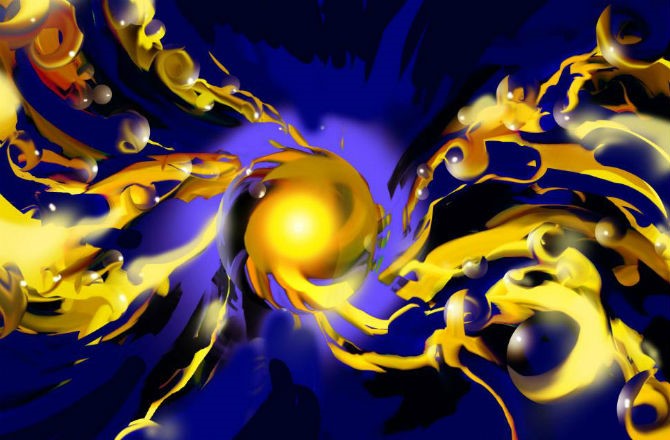
Researchers from The University of Cambridge developed the world’s smallest functional engine, which at just a few billionths of a meter in size, uses light to power itself. The technique holds vast potential in nano-technology, potentially propelling microscopic robots fast enough to enter living cells.
Nano-technology has been a long time pursuit in the science community, but the inability to drive nano-machines has left the technology largely confined within the domain of science fiction. Scientists have experimented with some solutions over the years, but all proved lacking in either speed, strength, or control.
“There have been many small machines, but they operate incredibly slowly — taking many seconds or minutes to move a single arm, for instance — and with very low forces,” said Professor Jeremy Baumberg, director of the University of Cambridge's NanoPhotonics Centre and senior author of the new study. This occurs because the viscosity of fluids exponentially increases at the nano-scale, to the point where a nano-machine floating in water is like a human trying to swim through molasses.
Innovations such as the new method of propulsion developed by the Cambridge team may resolve this challenging issue once and for all; it generates a force that's several orders of magnitude stronger than that of any previously conceived device, with a force per unit that’s approximately 100 times better than any muscle or motor. What’s more, the researchers claim the solution is bio-compatible, cost-effective, fast, and energy efficient.
Professor Baumberg has named the technology “ANT’s,” short for actuating nano-transducers. “Like real ants, they produce large forces for their weight.” The secret lies in creating a spring-like effect at the nano-scale by converting the Van de Waals energy, or the attraction between atoms and molecules, into elastic energy polymers before quickly releasing it.
The prototype engine is made from tiny particles of gold measuring 60 nano-meters in diameter that are linked together with a heat-sensitive polymer gel. Heating the engine with a green laser to more than 95 degrees Fahrenheit (35 degrees Celsius) causes it to absorbs a massive amount of energy within a micro-second, inducing the gel to expel water and contract within a microsecond, which in turn forces gold nano-particles to bind into tight clusters approximately 400 nano-meters wide.
Next, when the “nano-engine” cools, the gel absorbs more water and expands, causing the gold nano-particles to be quickly and strongly pushed apart like a spring. “It’s like an explosion,” adds Dr. Tao Ding from Cambridge’s Cavendish Laboratory, and the paper’s first author. “We have hundreds of gold balls flying apart in a millionth of a second when water molecules inflate the polymers around them.” At the nano-scale, the explosion creates the most powerful nano-engine to date.
ANTs’ long-term implication could lead to the commercialization of applications that involve manipulating and controlling fluids, or perhaps harnessing the expansion and contraction of the engine to drive nano-pistons and levers.
“The challenge we now face is how to control that force for nano-machinery applications,” adds Baumberg.
Source: Cam.ac.uk
Advertisement
Learn more about Electronic Products Magazine





